Science
Dawkins Carries Forward The Lamp Of Science In His Latest, And It Burns Just As Bright
Aravindan Neelakandan
Sep 02, 2017, 10:47 AM | Updated 10:47 AM IST
Save & read from anywhere!
Bookmark stories for easy access on any device or the Swarajya app.
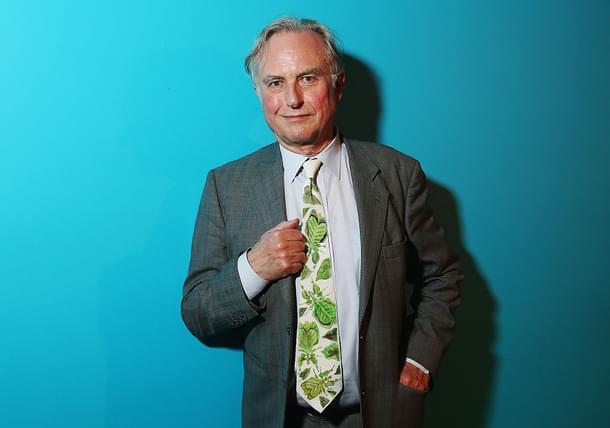
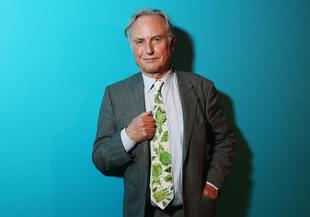
Richard Dawkins. Science in the Soul: Selected Writings of a Passionate Rationalist. Random House UK. 2017.
Richard Dawkins is one of the best science popularisers of our times. He is also an eminent evolutionary biologist. Starting from his book Selfish Gene in 1976, for more than four decades, he has made science a part of popular culture in an uncompromising way. A staunch Darwinian, he is the no-nonsense science writer every peddler of pseudo-science would do well to avoid. His forthright questioning of Deepak Chopra, cornering him over the now customary misappropriation and misuse of the ‘Q’ (quantum physics) word is one of the most delightful exposes of pseudo-scientific word jugglery purporting to be science.
The Oxford zoologist has provided many terms in his popular science books which have become very famous today. The word meme was coined by him in The Selfish Gene (1976). His concept of ‘extended phenotype’, dealt with in the book of the same title (1982), just like his ‘memes’, has had a tremendous influence on social sciences. In his Unweaving the Rainbow (1998), he introduced Petwhac (Population of Events That Would Have Appeared Coincidental), which aims to demystify the Jungian synchronicity, though Dawkins does not mention synchronicity explicitly. His other books, The Blind watchmaker (1986), to his two-volume autobiographical works, An Appetite for Wonder (2013) and Brief Candle in the Dark: My Life in Science (2015), have consistently furthered the cause of science, both in polity and culture, in a combative yet uncompromisingly scientific style. In this list now comes the latest book, Science in the Soul.
.jpg?w=610&q=75&compress=true&format=auto)
The book is a collection of 42 essays, written on various occasions and issues, spanning over three decades, with one connecting thread running through them all – taking a scientific approach that’s central to the question in hand.
Consider for example the case of eugenics. It is reprehensible by human value system if a commercial venture or a state (like that of the Nazis) tries to breed people for a particular mental trait or physical ability. Such a eugenic policy would be politically and morally wrong, proclaims Dawkins, but cautions us not to get our moral compass decide the truth and thus declare it to be impossible. Because Dawkins says, “Nature, fortunately or unfortunately, is indifferent to anything so parochial as human values.” The caution Dawkins exercises is very important given the critical history of the brief but intense romance the British science establishment, particularly the biologists like JBS Haldane, had with Marxism (until they were rudely awakened by the Lysenko-pseudoscience affair). The ideological attack on science was carried forward well after the Lysenko affair too - there continued a vibrant lineage of British scientists wedded to the theory, or rather ‘The Theory’.
Dawkins criticises the eminent geneticist Richard Lewontin. A biologist of Marxist persuasion, Lewontin proudly declared himself ‘the dialectical biologist’. Lewontin, and a group of scientists led by him, accused Dawkins of Cartesian reductionism and worse.
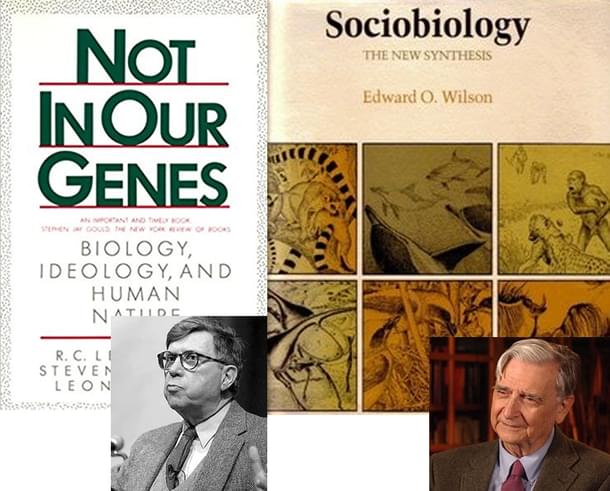
Things did get worse when white supremacists tried to use the works of Dawkins and another evolutionary biologist E O Wilson. Both the scientists categorically distanced themselves from the perverted misuse of science by white supremacists. Yet, the campus left started a demonising campaign against both. It was sort of a Marxist revenge for Lysenko. When Wilson spoke about the biological basis for human nature, students picketed his lectures and dowsed him with water. The battle which ensued was bitter, and in a way, loaded against sociobiology of Dawkins and Wilson in public perception.
Lewontin and his ideological colleagues went on to write a book, Not in our Genes, in 1984. One of the co-authors of the book was Leon Kamin who had exposed the fraud committed by Cyril Burt in his data to prove the inheritability of IQ. Patrick Bateson, an eminent biologist, and Dawkins, reviewed the book separately in the popular science magazine New Scientist. Bateson wrote:
Doubtless, it spoils the fun when the hate-object ceases to be hateful, but Rose, Kamin and Lewontin had a duty to keep themselves better informed about current developments in the subject they chose to attack so freely.
The review Dawkins wrote, was scathing and sarcastic. He called Not in our Genes a ‘silly, pretentious, obscurantist and mendacious book”. Though not included in this collection, the review is a classic in itself and will help people discover that not only religious theology but also political ideology should have non-overlapping magisteria with science. Dawkins nevertheless remembers those events in a footnote. Dawkins and New Scientist were even threatened with a lawsuit for the review. But Dawkins says in this volume, “I stand by every word of it.”
In 1979, after the election victory of Margaret Thatcher, Prof Steven Rose, one of the co-authors of Not in Our Genes, wrote in New Scientist about "the switch in scientific fashion, if only from group to kin selection models in evolutionary theory, … as part of the tide which has rolled the Thatcherites and their concept of a fixed, 19th century competitive and xenophobic human nature into power." To this charge, Dawkins replies with his characteristic sharpness - again a guide to everyone who wants to keep science free of ideology and politics:
Rose was a leader of the Marxist-inspired attack of the time on sociobiology. It is entirely typical that, just as these Marxists were incapable of separating their academic theory of history from their normative political beliefs, they assumed that we were incapable of separating our biology from our politics.
Despite all this bitterness, Dawkins in this book earns the reader's respect by his ability to clearly demarcate the barriers. In a footnote he says thus of Lewontin's stand regarding race and IQ:
... What could possibly be the point of investigating alleged correlations between intelligence and race? Certainly no policy decisions should ever be based on such research. That, I suspect, was the point Lewontin really intended to make and I unreservedly agree. However, as so often with ideologically motivated scientists, he chose to misrepresent his point as a (false) scientific one rather than as a (laudable) political one.
The whole episode is a cautionary tale for countries like India where the academic campuses have often been turned into ideological battlegrounds proactively by a dominating left.
All the articles in this compilation are ultimately soul-elevating in the sense that they emphasise the importance of reason and spirit of science in approaching many of the problems which we may think as being outside the realm of science or domains where inducing a hostility to a scientific approach is possible. A good example is Dawkins’ open letter to Prince Charles. This was about love for environmental conservatism leading to a hostile attitude to science, even if in the nuanced way of ‘intuitive thinking’ taking precedence over rational scientific thinking. Again Dawkins is in an unenviable position of being mistaken as anti-ecology person. He is not.
However, unlike the romanticising of the pre-modern past which is very much there in the environmental movements, Dawkins provides a rational perspective:
Slashing and burning (incidentally, no agricultural system is closer to being ‘traditional’) destroys our ancient forests. Overgrazing (again, widely practised by ‘traditional’ cultures) causes soil erosion and turns fertile pasture into desert. Moving to our own modern tribe, monoculture, fed by powdered fertilizers and poisons, is bad for the future; indiscriminate use of antibiotics to promote livestock growth is worse.
And he also points out that there is a harmonious side to destroying nature which he says is ‘criminal’: “There really is a sense in which ecosystems are balanced and harmonious, with some of their constituent species becoming mutually dependent. This is one reason the corporate thuggery that is destroying the rainforests is so criminal.” However, what is done by these profiteers in destroying the nature is in a way a very Darwinian natural process: “Much as we might like to believe otherwise, natural selection, working within each species, does not favour long-term stewardship. It favours short-term gain. Loggers, whalers and other profiteers who squander the future for present greed are only doing what wild creatures have done for three billion years.”
That it is natural does not mean we need to accept that. “But the very fact that Darwinism is true makes it even more important for us to fight against the naturally selfish and exploitative tendencies of nature. We can do it. Probably no other species of animal or plant can. We can do it because our brains (admittedly given to us by natural selection for reasons of short-term Darwinian gain) are big enough to see into the future and plot long-term consequences.”
Actually we can also learn from nature, particularly from some of its long term success stories, as in the case of endosymbiotic evolution of eukaryotic cells incorporating the prokaryotes (bacteria) as cell organelles like mitochondria and chloroplasts. In 1971, five years before the Selfish Gene, Margulis had published her The Origin of Eukaryotic Cell in which she had put forth the endosymbiosis hypothesis, arguing many of the cell organelles were more ancient organisms incorporated into other organisms becoming the eukaryotes. Initially considered a fringe concept, soon it became part of the mainstream understanding of evolution.
In 1995, Dawkins expressed his admiration for “Lynn Margulis's sheer courage and stamina in sticking by the endosymbiosis theory and carrying it through from being unorthodoxy to orthodoxy’ and considered it ‘one of the great achievements of twentieth century evolutionary biology”. In this collection, he mentions her in a footnote to Mark Ridley’s suggestion that the really improbable step in our kind of life was the origin of the eukaryotic cell. This is in a 2006 article Dawkins wrote exposing the unscientific absurdity of intelligent design by showing that classic ‘grandeur in this view of life’ in evolution.

Dawkins is also critical of ‘the Gaia’ hypothesis. To him, ecological rhetoric acquiring a mystic tone reached its ‘apogee in early versions of James Lovelock’s Gaia hypothesis.’ He also makes an anecdotal caricature: “In later versions Lovelock himself sought to disavow the mysticism, but it was still going strong at a conference where John Maynard Smith met a prominent devotee of ‘Ecology’ in the political rather than the scientific sense of the word. Somebody mentioned the theory that a large meteorite had struck Earth, thereby killing the dinosaurs. ‘Of course not,’ declared the fervent ‘Ecologist’, by Maynard Smith’s account; ‘Gaia would not have permitted it.’” James Lovelock, physicist and the formulator of Gaia hypothesis (along with Margulis) provides his own version of Dawkins’s opposition to Gaia, both positive and negative:
The trouble started in 1979 when the Canadian biologist Ford Doolittle wrote his lively and well-written critique of Gaia. ... Neither Lynn Margulis nor I could make a convincing defense - partly because as we had stated it, the Gaia hypothesis was wrong. We had said that organisms, or the biosphere, regulated the Earth’s climate and composition. Somewhere later in his book ‘The Extended Phenotype’ Richard Dawkins showed that this was impossible. He said it so well and clearly that the subject was then regarded by the scientific community as closed.
Dawkins is an extraordinarily talented author and persuader, and in his book he vented his scorn on the Gaia hypothesis with the powerful erudition that he now uses to censure theology. From then on it became impossible to publish any paper on it in a mainstream journal; ... It seemed in the 1980s almost as bad as censorship until the editor of Nature, John Maddox, learnt that during his absence the paper that Andrew Watson and I had written on the Daisyworld model had been rejected. ... I accepted Dawkins's criticism that there was no way for life or the biosphere to regulate anything beyond the phenotype of its component individual organisms. So what on Earth was doing the regulating? ... To me it was obvious that Richard Dawkins's pure biology and the geochemists' pure chemistry were unable to explain the Earth. And then I wondered, what if the whole system of life and its environment tightly coupled did the job? ... To prove this would require an experiment on the whole Earth. In fact this was happening through our own emissions of carbon dioxide.... it was not until 2008 that Richard Zeebe and Ken Caldeira used ice-core evidence to show that it was.
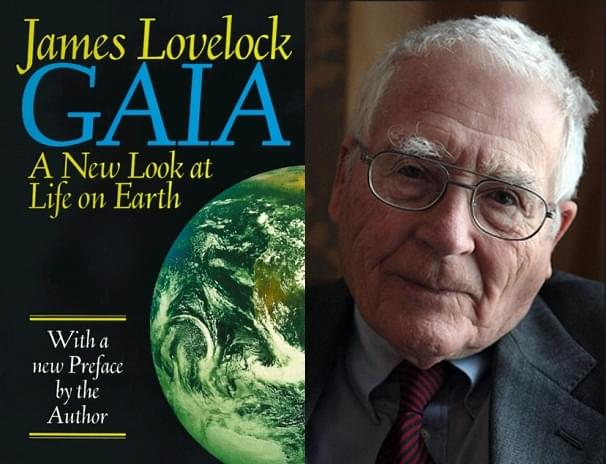
This rather long quote from James Lovelock’s The Vanishing Face of Gaia (2009) shows the crucial role played by Dawkins in shaping Gaia hypothesis, clearing it off its errors. The flip side is the almost censor-like strangling that the Daisyworld model had to face before emerging as a sound mathematical tool for biologists.
Being ‘fruitfully wrong’ is something that often happens in science and a margin should be given for it. A case in point is the famous scientist Sir Fred Hoyle. Dawkins rightly criticises Hoyle’s 'cosmic misunderstanding of Darwinism' with his comparing of 'Darwinian selection to a tornado, blowing through a junkyard and assembling a Boeing 747'’. Hoyle also championed an idea of cosmic panspermia and coupled it along with his anti-Darwinian stand, though there is actually no real conflict between Darwinism and evolution of basic forms or mega-molecules in the vastness of space and in interstellar dust.
An experiment designed to test panspermia by the Indian Space Research Organization (ISRO), along with the Centre for Cellular and Molecular Biology (CCMB), Hyderabad, and the Centre for Astrobiology, University College, Cardiff, Wales, collected upper stratospheric dust (1999:2000 & 2005:2009) and cultured it. The experiment discovered new species of microorganisms that were ‘more UV-resistant than their nearest phylogenetic neighbours’.
Eminent Indian physicist J V Narlikar points out that while this study does not conclusively establish the extragalactic origin of microorganisms, it certainly requires us to take that alternative more seriously than has been done hitherto. So, here we have ‘fruitful’ results from testing the hypothesis of a scientist who definitely held very wrong notions about evolution (and which even damage the cause of science as now Hoyle’s Boeing has become part and parcel of creationist propaganda giving lay public a feeling of authenticity to pseudo-science. )
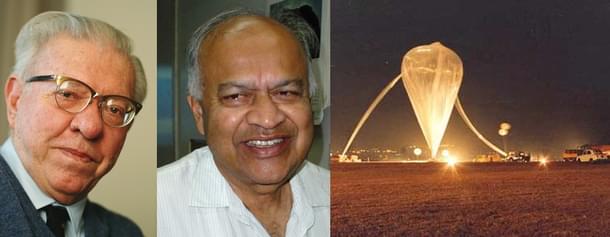
The rigour which Dawkins exhibits is nevertheless very much needed when we deal with claims of supernatural and the miraculous. Particularly in India, where a new breed of cult-gurus have started peddling new-age pseudo-science in the name of dharma, the society needs the immunisation of reason against such contagions of the mind. To fight this battle we need passion and from where can it come?
“Can there be anything holy to the celebrated agnostic?" asks Matthew Brady (played by Friedrich Mach), the counsel for prosecution in the movie Inherit the Wind (1960), the fictionalised account of 1925 Scopes "Monkey" Trial. “Yes" answers Henry Drummond (played by legendary Spencer Tracy,) the lawyer of the teacher being prosecuted, “The individual human mind.” One can almost feel the echo of that court room drama when Richard Dawkins writes thus:
I suppose I am saying that scientists have a scale of values according to which there is something almost sacred about nature’s truth. This may be why some of us get so heated about astrologers, spoonbenders and similar charlatans, whom others indulgently tolerate as harmless entertainers. The law of libel penalizes those who knowingly tell lies about individuals. But you get off scot-free if you make money lying about nature – who can’t sue. My values may be warped, but I’d like nature to be represented in court like an abused child.
Dawkins also comes across in this collection of essays as a warm rational scientist who is interestingly so open to the innocent human fascination for the grandeur of nature. He says: “To many Native American tribes the Grand Canyon is a sacred place: site of numerous origin myths from the Havasupai to the Zuni; hushed repose of the Hopi dead. If I were forced to choose a religion, that’s the kind of religion I could go for.”
Dawkins is also batting for a spirituality that does not need juvenile miracles of water turned to wine, or the criminal fear of hell fire and carrot of the X-rated heaven or the charlatanism of downloading the Akashic records. Making a case for awarding Nobel literary prize to science writing of the quality of Carl Sagan or Lewis Thomas or Stephen Jay Gould, he points out that "‘Spiritual’ is another word that could be used to describe Saganesque literary science." And to express this spiritual feeling, Dawkins uses the words of the famous Indian astrophysicist Subrahmanyan Chandrasekhar -“shuddering before the beautiful”. Quoting Chandrasekhar’s passage in full , the biologist finds his words 'moving in a way’ that is missing from the skittish dilettantism of John Keats’ "‘Beauty is truth, truth beauty,’"
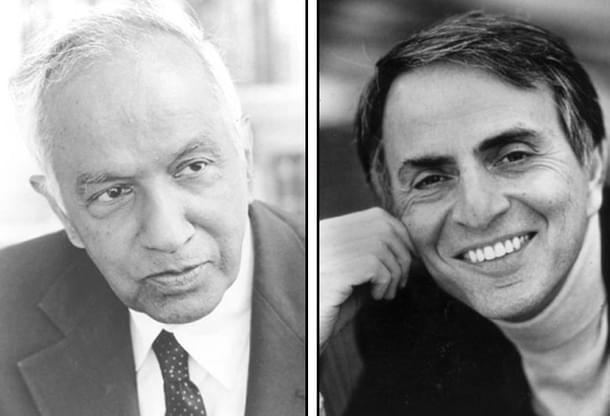
One can disagree with Richard Dawkins on many things. As Stephen Jay Gould did and Lynn Margulis did. But what Dawkins has done in this book is that he unmistakably takes forward, in an uncompromising way, the light of that lamp of science amid the darkness of competing fundamentalism and anti-science denial of even climate change from high places. In this, he continues the legacy of Carl Sagan, though of course, in a more combative mode.
Aravindan is a contributing editor at Swarajya.





